‘Free Radicals’ Can Majorly Damage Your Skin. Here’s What You Should Know.
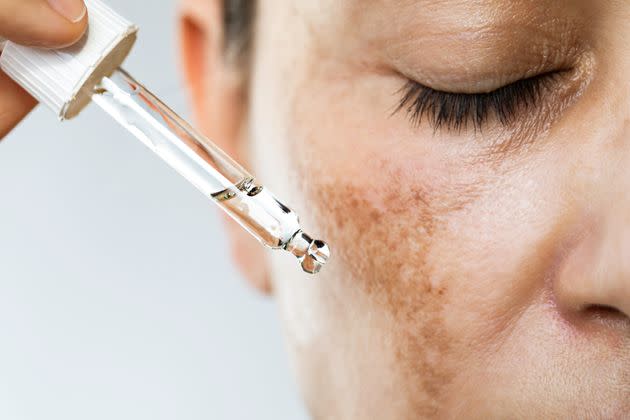
If you’ve done any research into skin care tips and products, you may have encountered the term “free radicals.” Dermatologists often talk about “free radical damage,” but don’t always define what that means. It also comes up as something that can play a role in the development of cancer and other health issues.
Admittedly the term “free radicals” sounds like a countercultural group from the 1960s, but that explanation wouldn’t explain their role in dermatology.
So what exactly are free radicals? Below, dermatologists break down what you need to know about them from a skin care perspective, their impact and how to best deal with it.
What are free radicals?
“Free radicals, also referred to as reactive oxygen species, refer to an unstable molecule that is formed when chemical changes take place in a normal cell,” Dr. Marisa Garshick, a board-certified dermatologist in New York and New Jersey, told HuffPost.
Specifically, she noted that these molecules have an unpaired electron, which makes them unstable and highly reactive.
“Without a partner to stabilize it, the solo electron has the ability to interact with other molecules through a process called oxidation, which can damage cells and the DNA contained within them,” said Dr. Gloria Lin, a board-certified dermatologist at Schweiger Dermatology Group in New York.
A number of factors can contribute to the buildup of free radicals, stemming from both internal physiologic reactions and external pollutants.
“Free radicals can come from natural biological processes from the body’s metabolism but often are from other outside sources that we are exposed to on a daily basis, like sun exposure, smoking, pollution and toxins,” Lin said. “Specifically, UV radiation from the sun causes free radicals and may contribute as much as 80% to skin damage.”
What do free radicals do?
“To understand what free radicals do, remember that these are molecules that have an extra electron, called an unpaired electron, which makes them unstable,” said Dr. Blair Murphy-Rose, a board-certified dermatologist and clinical instructor of dermatology at Weill Cornell Medical College in New York. “This instability leads free radicals to steal an electron, thus disrupting something stable. That something causes cellular damage and DNA damage.”
Unless they are neutralized, free radicals can build up and wreak havoc.
“Free radicals target macromolecules like DNA, lipids, cell membranes, proteins and more and lead to cellular damage,” Garshick said.
The phenomenon is known as oxidative stress.
“Typically, our body’s own antioxidant defense system and certain foods that we eat ― vitamins A, C and E ― can help counteract the harmful free radicals,” Lin explained. “However, if there is an imbalance and these molecules outpace our body’s ability to neutralize these, then the stress can lead to cell damage and death. As we age, the natural defense system of the body is not as effective. The damaged DNA can be repaired by our body, but if not completed in time, then this gets passed on and can lead to potential progression to skin cancer in the future.”
In addition to increased skin cancer risk, there are also aesthetic effects on the skin with premature signs of aging.
“Free radical damage can contribute to changes in the skin including loss of collagen, leading to increased skin laxity, fine lines and wrinkles, as well as discoloration and hyperpigmentation,” Garshick said. “It can also contribute to dullness and inflammation leading to worsening acne and rosacea.”

How can you counter free radical damage?
“Since sun exposure is a major cause of free radicals, prevention and reaction to UV radiation can decrease signs of skin damage,” Lin said.
Regularly wear sunscreen and avoid prolonged periods of exposure to the sun. Today, many sunscreens contain antioxidants ― another key strategy for mitigating free radical damage.
“Antioxidants also have an unpaired electron, but they preferentially take an unpaired electron from a free radical ― thereby stabilizing the free radical and preventing the damage it would otherwise cause,” Murphy Rose explained.
You should take a twofold approach to antioxidants with both topical and dietary options.
“First and foremost take a multivitamin with antioxidants,” recommended Dr. Karan Lal, a board-certified dermatologist with Affiliated Dermatology in Arizona. “This will help supplement your diet with minerals that aid in a number of repair processes. Eat lots of colorful fruits and vegetables as they serve as a great natural reservoir for antioxidants.”
Blueberries, artichokes and kale are some of the many antioxidant-rich foods you can incorporate into your diet.
“Topical application can help neutralize the free radicals you may be coming in contact with,” Lal added. “Look for antioxidants like vitamin C, E, zinc, copper, selenium and various botanicals. Regular use of topical and oral antioxidants can help prevent the damage from the environment and from aging.”
For example, consider applying a vitamin C serum to your face and neck before your moisturizer and sunscreen. While Lin endorsed brands like Skinceuticals, La Roche Posay, and Paula’s Choice, Garshick recommended a few specific antioxidant-rich skin care products, including Vichy Mineral 89 Prebiotic Recovery and Defense Concentrate, Revision Skincare Intellishade TruPhysical, and Charlotte Tilbury Invisible UV Flawless Primer SPF 50.
“Using antioxidant products in the morning can help reduce the impact of free radicals that are generated throughout the day,” noted Dr. Brendan Camp, a board-certified dermatologist and clinical assistant professor of dermatology at Weill Cornell Medical College.. “Using reparative ingredients at night, like niacinamide and hyaluronic acid, can help the skin recover from the preceding days stresses.”
Niacinamide is a form of vitamin B3 that’s found in topical products and as an oral vitamin. Foods like meat, poultry, fish and brown rice also contain this vitamin.
“Niacinamide can help to reduce the photoaging caused by the free radicals,” Lin said. “There was actually a study that showed that taking niacinamide 500 mg twice daily can be helpful to decrease pre-cancers and non-melanoma skin cancers by up to 25%.”
Other anti-aging ingredients, products and procedures can also help counter free radical damage.
“For example, using a retinoid can help to boost collagen production to improve the appearance of fine lines and wrinkles,” Garshick said. “Using certain exfoliating acids, such as glycolic acid, may help to brighten the skin.”
Looking for products with niacinamide? Check out the dermatologist-recommended picks below.
HuffPost may receive a share from purchases made via links on this page. Every item is independently selected by the HuffPost Shopping team. Prices and availability are subject to change.
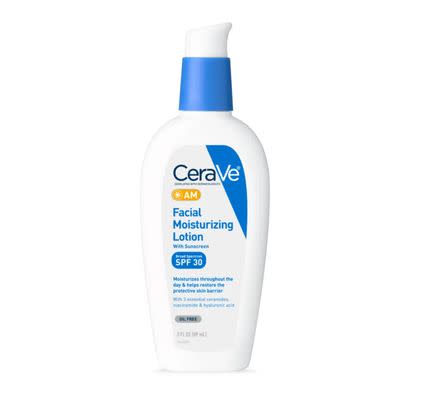
Amazon
CeraVe AM Facial Moisturizing Lotion with SPF 30
“It’s oil-free and has non-comedogenic sources of moisture and skin barrier support from hyaluronic acid, ceramides and niacinamide,” said Dr. Deanne Mraz Robinson, a dermatologist and assistant clinical professor of dermatology at Yale New Haven Hospital.

Dermstore
PCA Skin Vitamin B3 brightening serum
“A great product for brightening, specifically,” said dermatologist Dr. Dhaval Bhanusali.
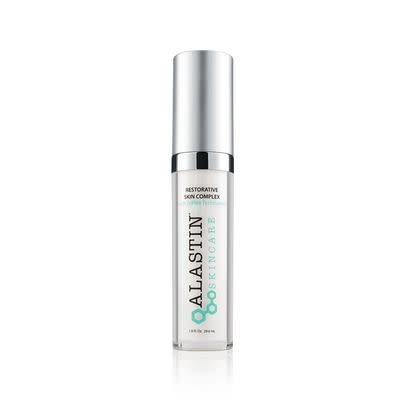
Alastin
Alastin Restorative Skin Complex
“It contains a mix of potent antioxidants, which includes niacinamide,” Robinson said. “This product is fantastic for encouraging collagen synthesis in the skin, while supporting the skin's barrier and softening pigmentary concerns.”

Sephora
Alpyn Beauty wild nettle and niacinamide firming serum
This silky serum gets a boost from niacinamide to reduce the appearance of pores, hydrate skin and nourish deep down.
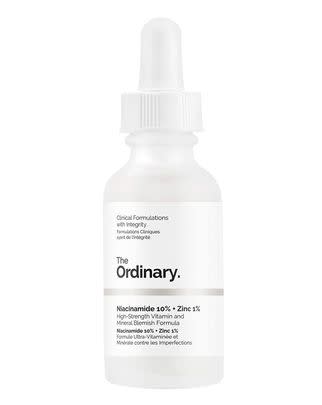
The Ordinary
The Ordinary niacinamide 10% + Zinc 1%
Dermatologist Dr. Janiene Luke recommends this as an affordable option.
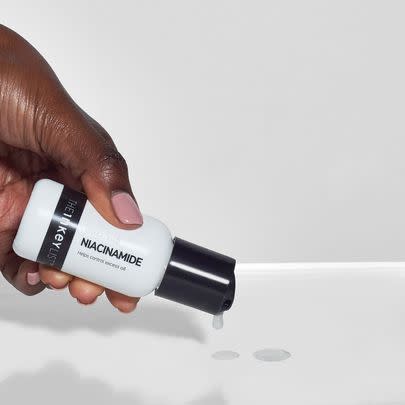
Vlad Skibunov
The Inkey List niacinamide oil control serum
Another of Luke’s affordable suggestions.
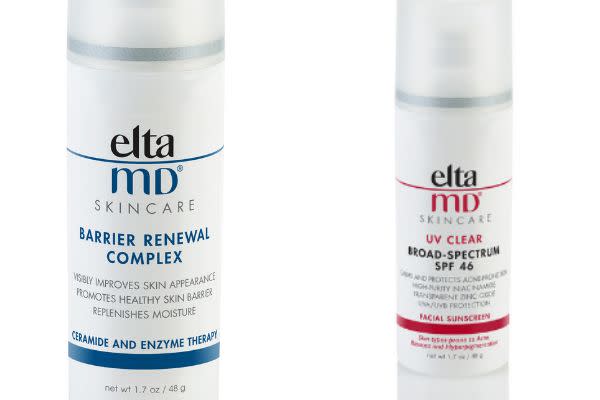
Amazon
EltaMD Barrier Renewal Complex and EltaMD UV clear broad-spectrum SPF 46
Luke recommended two EltaMD products specifically — the sunscreen and the Barrier Renewal Complex. It's important that you apply the layer of moisture before applying the sunscreen, especially if you have dry skin.
Barrier renewal complex: $55.10 at Amazon
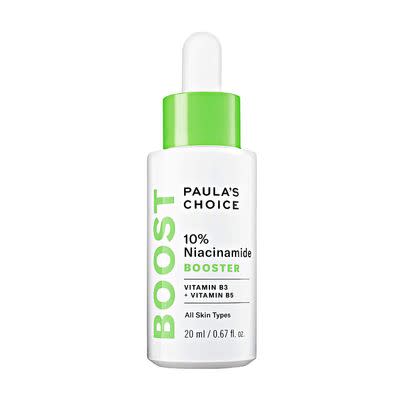
Paula's Choice
Paula’s Choice 10% niacinamide booster
The gentler of the brand's two options, this 10% concentration is lauded for its ability to repair enlarged pores, shrinking them back down to their normal shape and size, explained Desiree Stordahl, senior research and education manager at Paula’s Choice. She added, “I’d also recommend it for anyone who feels like their complexion has become dull — it makes a stunning impact in reviving skin’s healthy glow.”
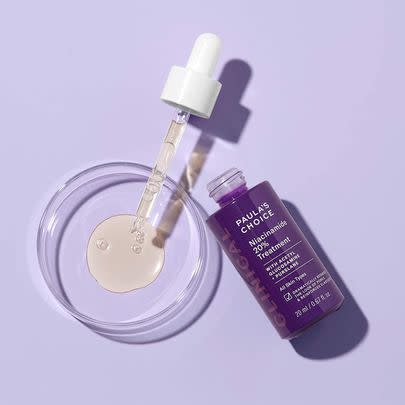
Paula's Choice
Paula’s Choice niacinamide 20% treatment
Looking for a higher concentration than 10%? This product is recommended “for anyone with stretched, enlarged pores, sometimes described as ‘orange peel texture,'" Bhanusali suggested. “This high concentration of niacinamide can help with post-acne lesions, but check tolerability first."